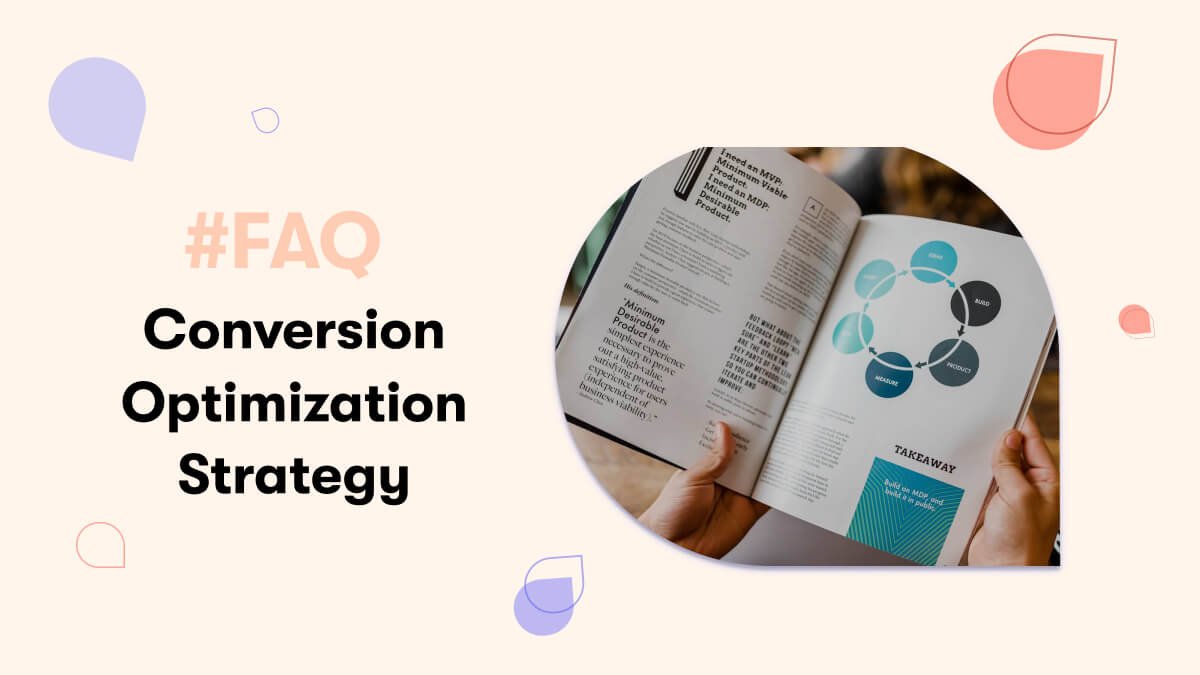What is a Conversion Rate Optimization Strategy?
Everything you need to know about creating your conversion rate optimization strategy. How to create a hypothesis, make an A/B test, and analyze the results.
Published November 5, 2024.

Conversion Rate Optimization or CRO is a technique used to improve the sales conversions of visitors to a website or app. Brands use CRO to convert their traffic to actionable results - such as getting a new lead via a popup, downloading a pdf guide, or buying a product or service.
A successful CRO strategy should have the following steps:
Conduct a detailed CRO audit
The first step of any CRO strategy should include a detailed audit of the current website and the existing conversion rate. There are a few aspects of performing a proper CRO audit.
First, review the website from a "best practice" perspective. Determine which elements of the site are clearly misaligned with CRO best practices. If you don't know that off the top of your head, then you can also ask yourself, "If I am a visitor to my website, where may I get stuck, have a question, show concern, get annoyed?".
Then draft 15-30 ideas on a piece of paper and prioritize those from what you feel is most important to least important. You'll never really know until you start testing, so this is just to get your creativity flowing.
Next, you'll want to use data analytics tools like heat maps, user recordings, and surveys to determine where people are dropping off your website the most, what that behavior looks like, and get a better understanding of what the real problems are. With a comprehensive surveying strategy, you can also discover more about the *why*.
In other words, why are people actually dropping off? Rather than formulating your own ideas, you can turn to your own website visitors to tell you directly.
Make a hypothesis
Now that you have all the data in front of you, you'll want to start finalizing some of the potential testing ideas to work on.
To form a solid hypothesis, you must ask yourself the following question: "What is the fundamental issue that I'm potentially solving by testing this idea?".
This is critical as you'll have an easier time formulating new ideas and also comparing tests that have similar hypotheses.
Run an A/B test
Set up an experiment to test your hypothesis. You can either do a simple A/B test or a multivariate test (if you want to test three or more variants). Use a tool like Google Optimize or Optimizely to set it all up.
Depending on the amount of traffic you get, experiments should run anywhere between two weeks and two months. Ideally, closer to two weeks. That's because the longer an A/B test runs, the less accurate it becomes. Then other variables come into play like seasonality and cookie duration.
Pro tip: need help setting up the right A/B tests? Want to improve your site performance? Hire one of our top A/B testing specialists.
Analyze the results
See which variant/s did the best and choose the winner. It could be that there is more than one variant that did well and you might want to run a second test to select the true winner.
Make the changes
Now that you have the winning variant it’s time to make the changes to your site. Develop the new features or variants to existing elements on your site. It might take a development team or a freelancer to implement.
Continue testing
It’s important to continue to test your site.
One experiment is not enough to make a dent in your conversion rate.
For new ideas that are on your testing roadmap, it's always a good idea to review the test hypothesis first.
Ask yourself: is that hypothesis similar to a testing idea that already succeeded/failed? If so, it may be worth taking another look at the results of that other test and the analysis to see if it makes sense to run another test for a similar/same hypothesis.
A/B testing can be very costly in time and resources, so each test should be carefully considered and prioritized according to an order of importance and urgency.


